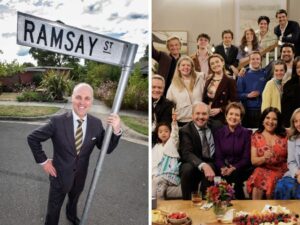
The new Renault-based 2026 Mitsubishi ASX may not have been the Japanese brand’s first choice for a small SUV replacement, but ensuring a suitable successor for the 15-year-old model was crucial amidst market uncertainty. At the launch of the new ASX, based on the Renault Captur, Mitsubishi Australia executives hinted that the vehicle serves as a temporary solution until a “true replacement” is developed.
With the previous ASX on sale since August 2010, questions arose as to why a replacement model wasn’t developed sooner. Mitsubishi Australia’s General Manager of Product Strategy, Bruce Hampel, suggested that market conditions and internal decisions influenced the timing. “I can’t really speak [to it] – but you’re on the money,” Hampel told CarExpert. “In terms of like, yeah, [the new ASX] was filling a need to have an offering in this space until we can develop probably the true replacement of ASX.”
Challenges and Strategic Decisions
The all-new ASX has just been released in Australia, but the Renault Captur on which it’s based has been available in Europe since 2019, already halfway through its model life. “We needed a product in the small SUV space and we needed one that met the requirements that the European ASX… that Europe had already engineered [to our standards] was the logical choice for us,” Hampel explained.
Hampel acknowledged the dynamic nature of the Australian market, which requires anticipating future regulations. Following changes to the Australian Design Rules, Mitsubishi’s lineup has been reduced, with only the Triton ute, Outlander mid-size SUV, and the new ASX remaining once existing stock of the larger Eclipse Cross and Pajero Sport are sold out.
Future Prospects and Market Volatility
Tim Clarke, Senior Product and Program Manager, emphasized the importance of avoiding product gaps. “I think from our perspective, at the end of the last [life] cycle of this product, whatever that may be, we aim to have another product ready to replace it,” Clarke told CarExpert. “We don’t want to have blackout periods or gaps and we’re talking to our parent company about what that replacement – well, the successor product – will be.”
Clarke also highlighted the challenges posed by market volatility, electrification, and safety standards. “Like Bruce said, there’s a lot of volatility in the market at the moment. Electrification, also around ANCAP – like, is [a five-star safety rating] going to be the requirement into the future, as well?”
“We’re having to make assumptions and input that into the business cases now, as to what that product will end up being,” Clarke said.
Implications and Next Steps
While it appears the new-generation ASX could be on sale in Australia for less than five years, Mitsubishi has yet to confirm its product plans. The sudden resignation of Mitsubishi Australia CEO Shaun Westcott last month, just days before VFACTS data showed the company slipping in national sales charts, adds another layer of complexity to the situation.
The announcement comes as Mitsubishi navigates a rapidly changing automotive landscape, balancing the need for immediate market presence with long-term strategic planning. As the company explores future options, the industry will be watching closely to see how Mitsubishi adapts to these challenges.







